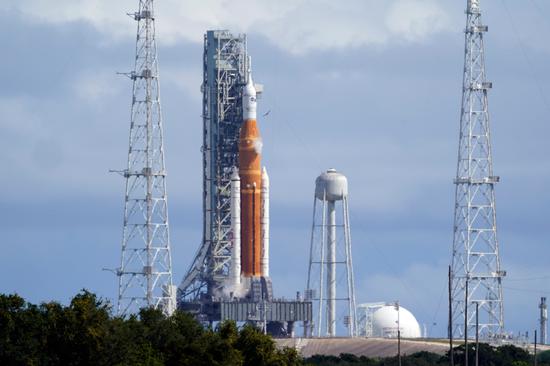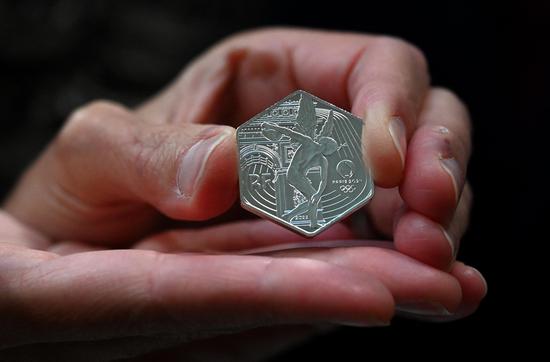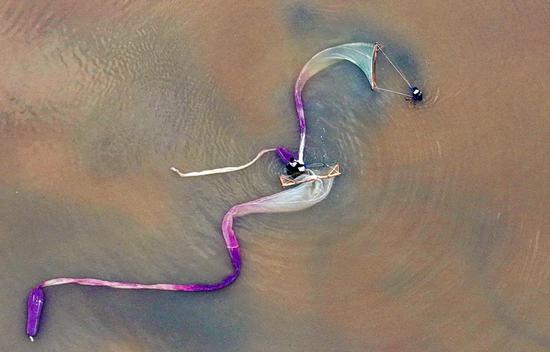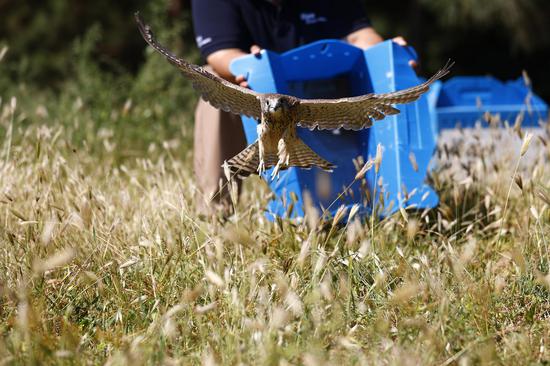
Chen Ling, a researcher at the Institute of Geology and Geophysics of the Chinese Academy of Sciences, explains Zhurong rover's findings at a press conference. (Photo/Provided by the Institute of Geology and Geophysics of the Chinese Academy of Sciences via Xinhua)
What does the subsurface of Mars' northern lowlands have in common with a French mille crepe cake? They both consist of a number of layers, according to the latest findings by China's Zhurong Mars rover published in the journal Nature on Monday.
The discovery showed that the evolution of the Martian surface environment is more varied and complex than previously anticipated, experts said. Last year, the Zhurong rover landed in Utopia Planitia, a large plain that scientists suspect was once a massive ancient ocean.
Although the rover didn't detect liquid water up to 80 meters underground, the subsurface layer from 30 to 80 meters may be shaped by major flooding that took place around 3.2 to 3.5 billion years ago, said Chen Ling, a researcher at the Institute of Geology and Geophysics of the Chinese Academy of Sciences.
For the layer between 10 and 30 meters underground, the strata were likely sculpted by smaller floods, meteorite impacts or long-term weathering during the Middle to Late Amazonian periods about 1.6 billion years ago, she said.
"What does Mars' underground look like, how did it evolve and whether there are water or ice buried deep under the Martian surface are very important scientific questions that have garnered a lot of attention," she said. "The Zhurong rover may provide valuable insights into these key questions."
Xiao Long, an astrogeology professor at China University of Geosciences, Wuhan, said Zhurong's onsite data can help scientists figure out whether an ancient ocean had existed on Utopia Planitia, and where the water went if there had been an ocean.
The rover is equipped with six major scientific instruments, allowing researchers to study local geology, the chemical composition of rocks and local weather conditions.
In March, scientists reported finding grooves and etchings from particles carried by wind on rocks around Zhurong's landing site, suggesting that physical weathering such as impact sputtering and wind erosion, as well as aqueous interactions involving salt and brine are factors that shaped Mars' current surface.
On July 2020, China's Tianwen 1 Mars spacecraft took off from the Wenchang spaceport and entered Mars orbit in February 2021. The feat made China the first nation to carry out an orbiting, landing and roving mission to Mars on its maiden attempt.
As a result, the mission received the International Astronautical Federation's annual space achievement award on Sept 18 during the 73rd International Astronautical Congress in Paris.


















































 京公网安备 11010202009201号
京公网安备 11010202009201号